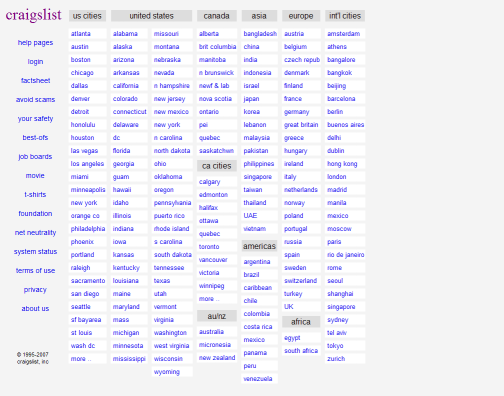The Problem with Low, Low Prices
Thursday, January 8, 2015
I've argued that companies should consider charging more. High prices can be used as a form of signaling to indicate a more desirable product or service. After all, wouldn't the average person assume that a $30,000 car is superior to a $10,000 one? Wouldn't the average person assume that a $1,000,000 house is better than a $250,000 one? Without much detail to go on, a high price delivers a strong indication that the seller believes that the market will value his offerings above and beyond those of his competitors.
For a long time I thought that the information above was the primary reason to charge more. Oh, how wrong I was! With the help of Craigslist, I was able to discover another important reason why some sellers should charge more.

I arrived at the site, eager to purchase a table. But I was not just searching for any table. I was a price-conscious consumer. That is to say, I wanted the cheapest one that didn't look hideous. My first attempt to discover a suitable piece of furniture was laughable. I searched for tables priced between $1 and $100. Many results came back. There were even some beautiful tables priced at a single dollar! What amazing luck! Clearly, many folks wanted to liquidate their old furniture - they valued the speed of sale above the profitability of the sale! Overjoyed, I eyed the empty spot in my apartment with disdain. It would soon be filled with some beautiful furniture.
Soon my joy turned to anguish. Those low, low prices were complete and utter fabrications. Each and every ad I checked either stated "open to offers" or listed a "real" price that was significantly higher than a single Washingtonian portrait. To put it bluntly, the common $1 was a trick to lure suckers like me into their trap.
In a way it made sense. By using a fake $1 price, the sellers ensured that large numbers of people would see their ads. Those who were looking for deals (but were willing to pay more for something nice) would be captured. The entire cost of the deceptions would be borne by cheapskates (like myself) whose time would be wasted and by Craigslist itself (the reduced accuracy of its search results would render it less valuable to a large swath of its users).
It was only when I raised the minimum price I was willing to pay to a heart-wrenching $10 that I was able to free myself of the fake ads. No deceptive sellers had thought to raise their fake prices to that level. It was then that I learned a little-known lesson: higher prices don't just signal a higher quality of the product being sold. They also indicate a higher likelihood that the price indicated is an actual price and not a lure to capture increasingly fickle customers' attention.
Fortunately, the price of my excellent reference on software pricing is as stated. Pick up a copy and learn how to price your products properly!